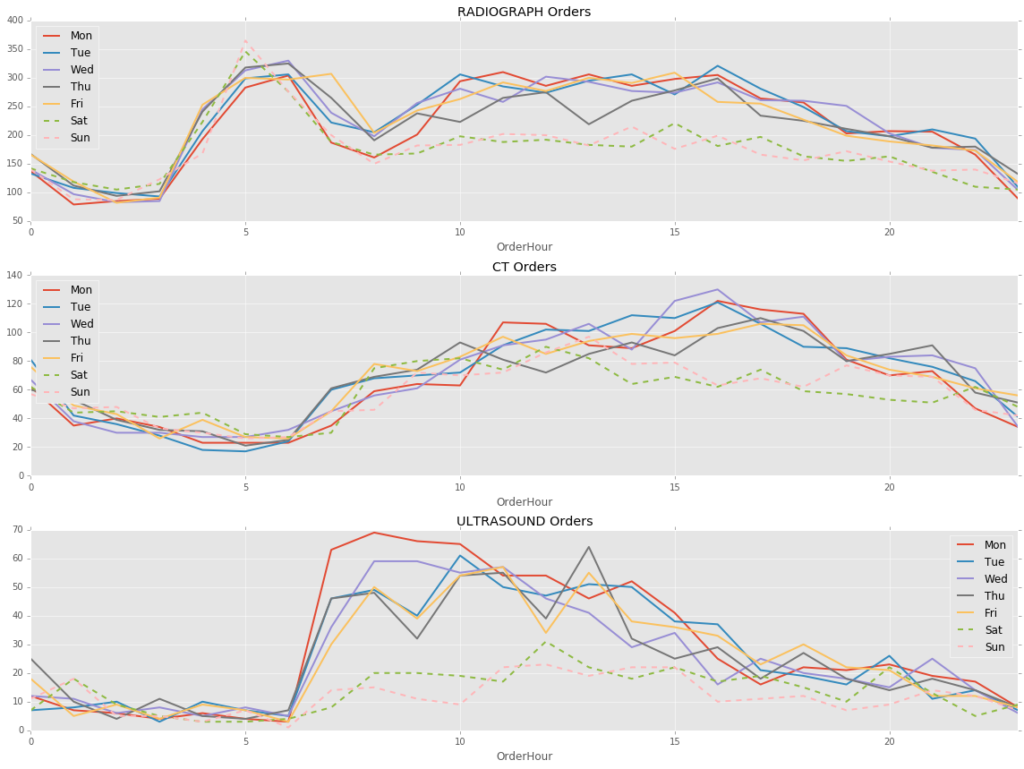If you have taken overnight call, you quickly develop a sense for the emergency department and the inpatient floors. In my institution, radiologists develop hypotheses on how inpatient orders are placed.
For instance, sometimes it might seem as if inpatient radiology exams follow some sort of circadian rhythm. The data look to confirm it: we see the infamous “x-ray bump” in the early morning, with the increase in CT start more gradually but last later into the day.
Also, are weekdays and weekends any different? If so, how?
Going on a Quest
With a little coding in Python or R, one can gain a lot of insight into how our referring providers’ lives intertwine with our own. Read the full story in my new post on Radiology Data Quest.


